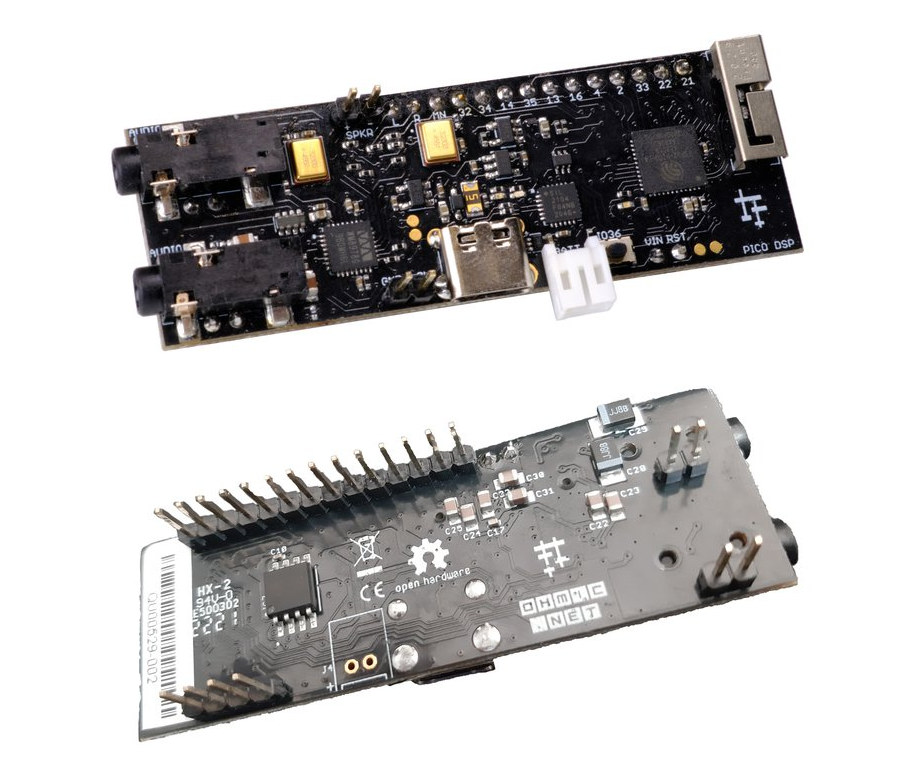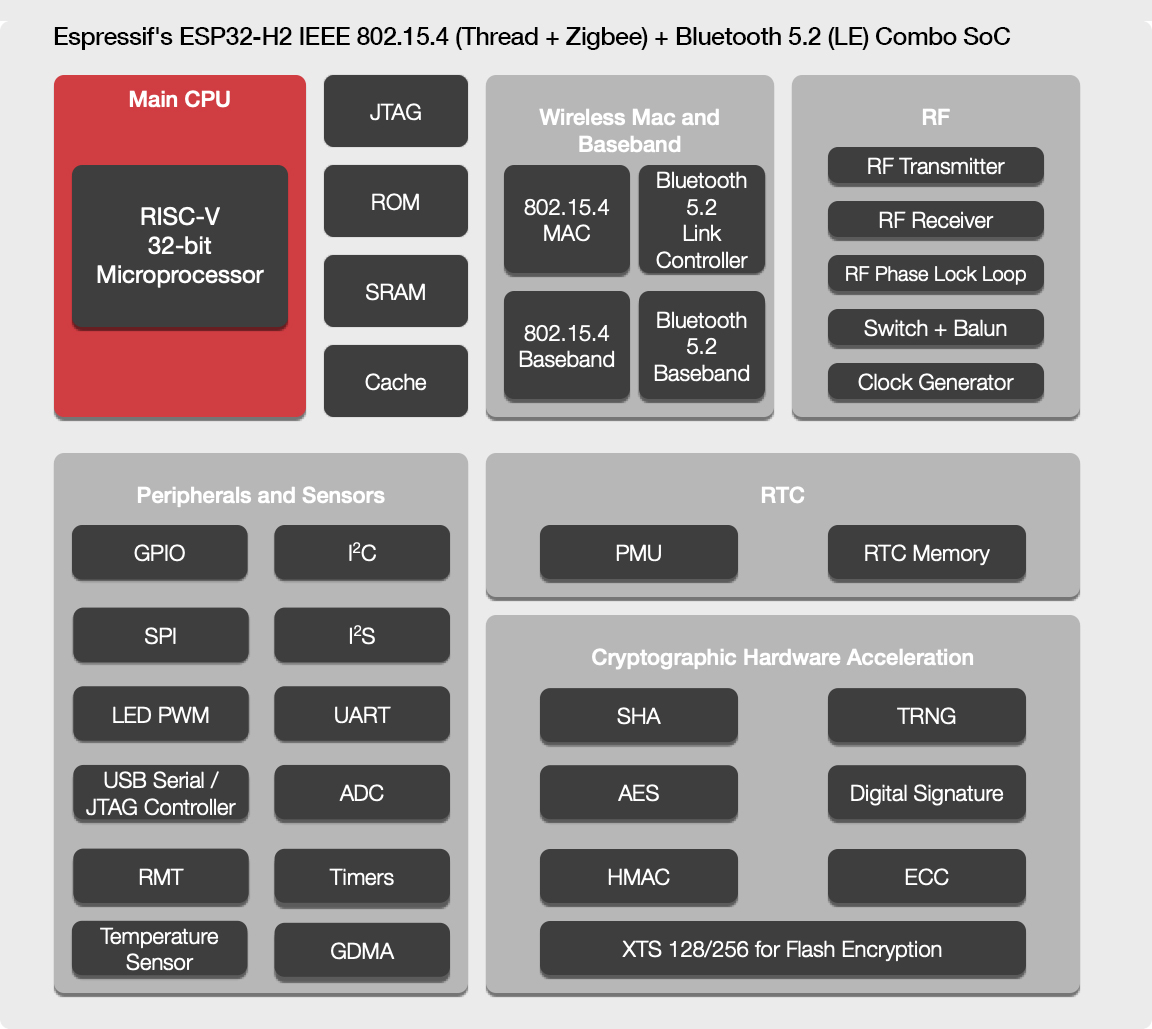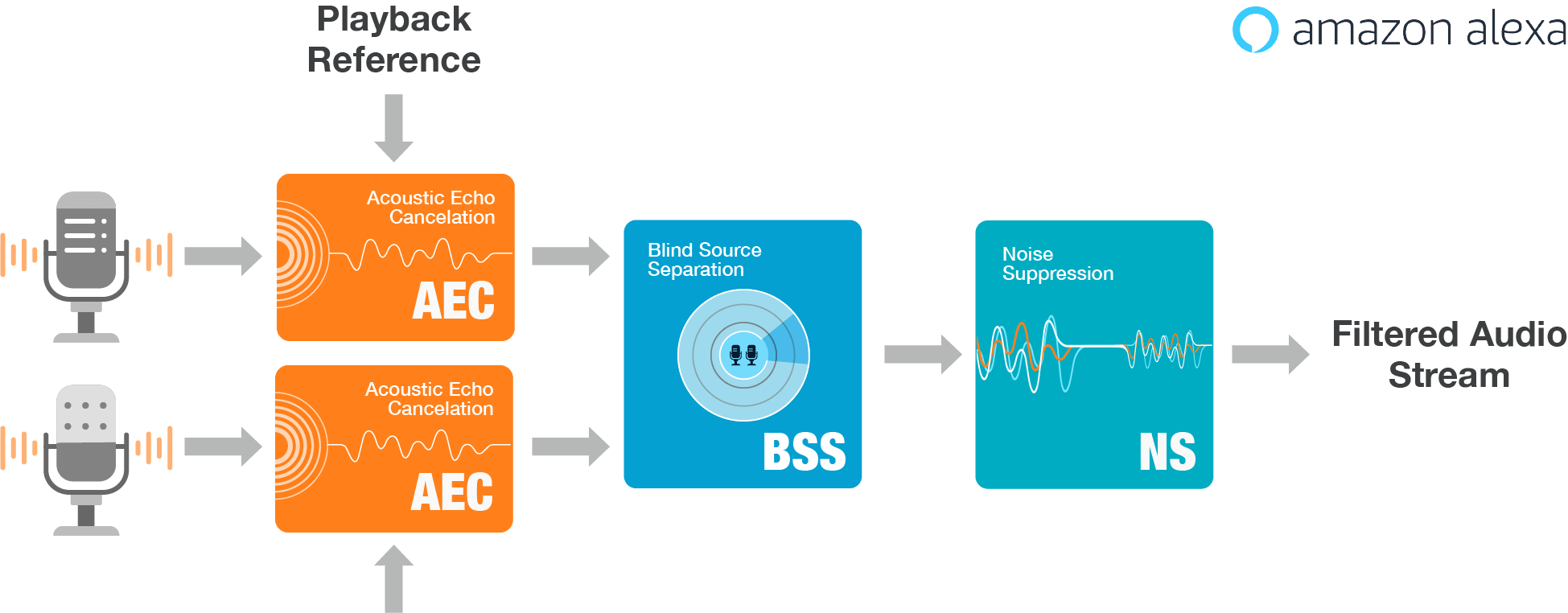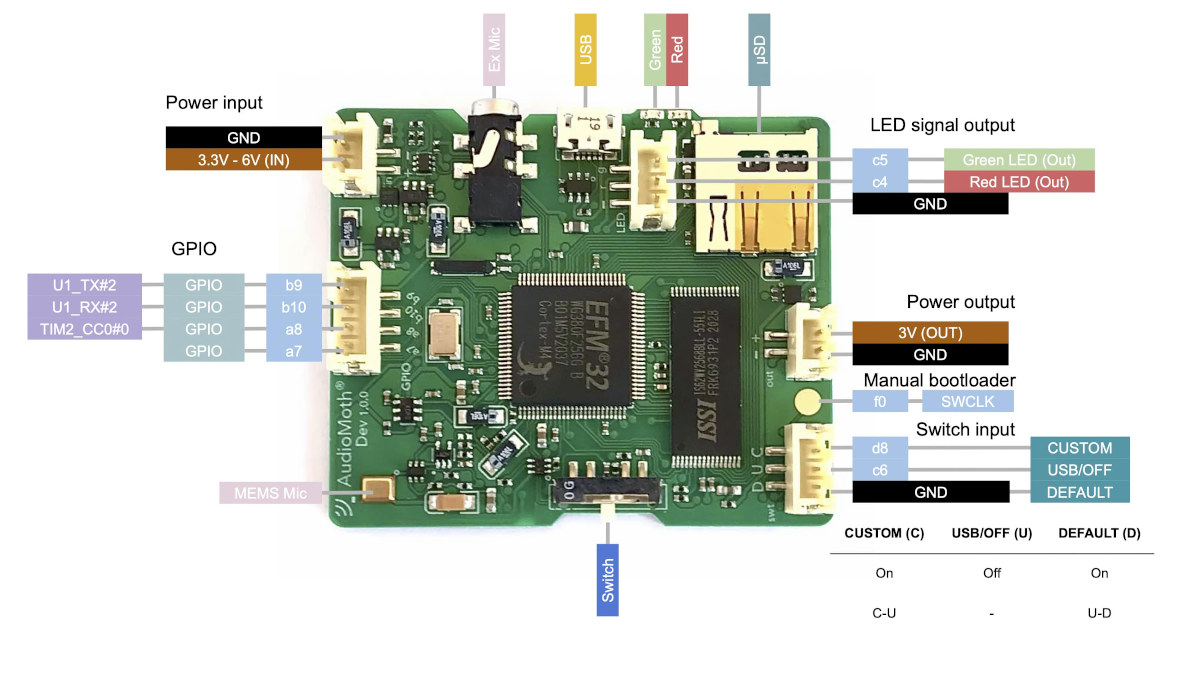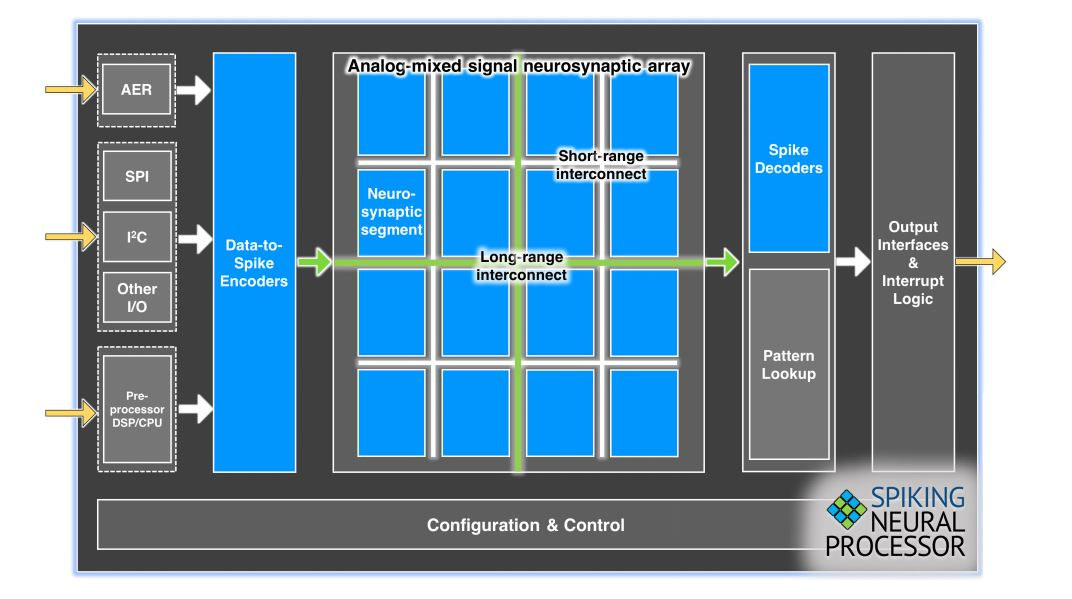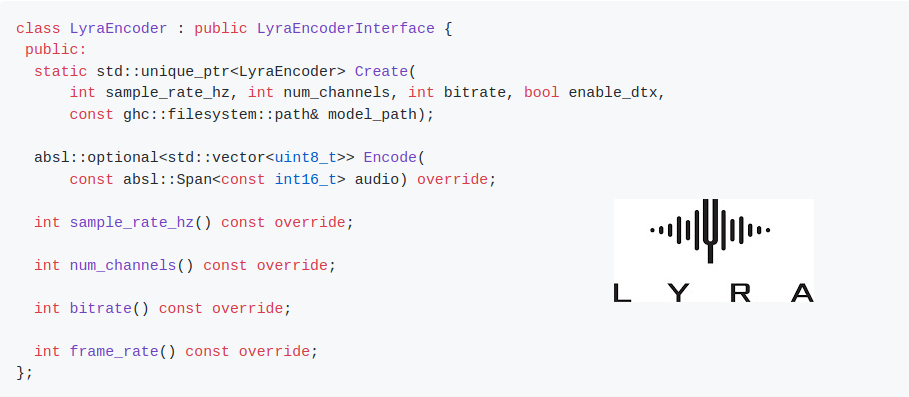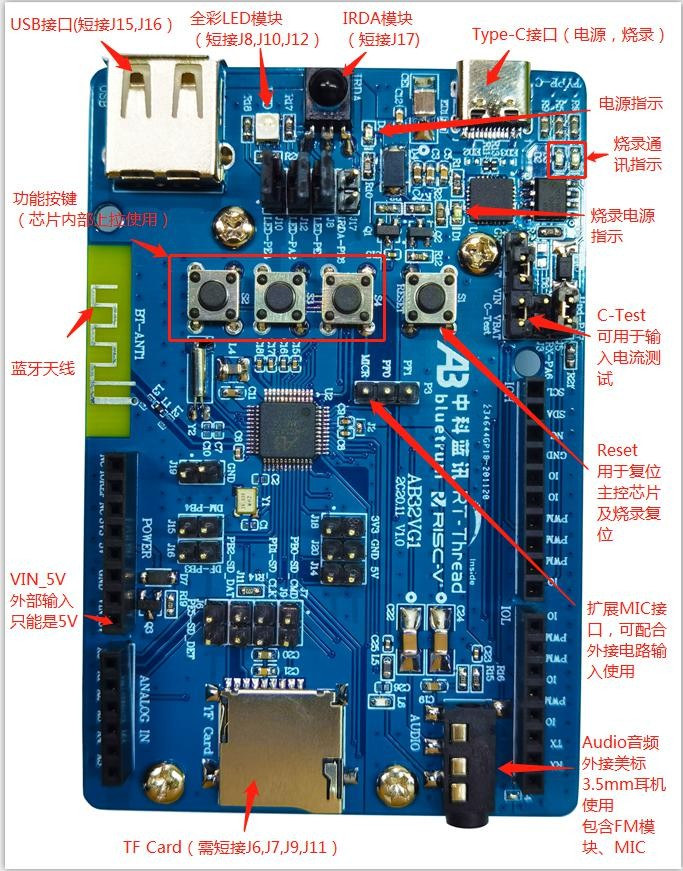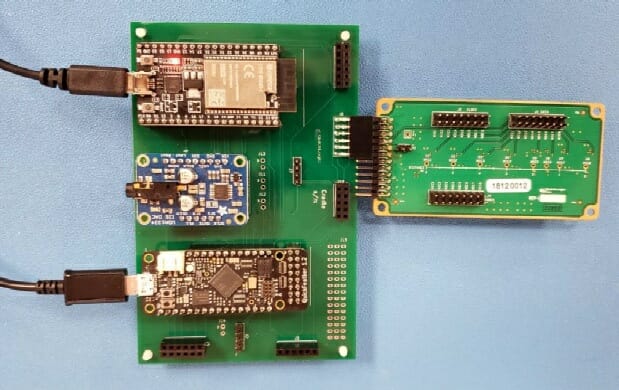ESP32 audio development boards have been around ever since ESP32 boards were introduced starting with Espressif Systems’ own “ESP32-LyraTD-MSC Audio Mic HDK“, and now ESP32 hardware and software have been certified for Amazon Alexa Voice Services. PICO DSP is another ESP32 development board for audio and digital signage processing (DSP) applications. Equipped with a Wolfson WM9878 stereo audio codec, the breadboard-friendly, Arduino compatible board includes two MEMS microphones, audio in and out jacks, a speaker header, plus other audio signals routed to a GPIO header. PICO DSP specifications: SiP – Espressif ESP32-PICO-D4 system-in-package with ESP32 dual-core WiFi 4 & BLE processor, 4MB SPI flash External storage/memory Original Edition – External 64 MB pseudo-static (PSRAM) chip, of which up to 8 MB is currently supported by ESP-IDF. Strawberry Edition – 16 MB of external NOR flash (note: the internal 4MB SPI flash will not be usable after selecting the NOR flash […]
ESP32-H2 RISC-V WiSoC announced with Zigbee 3, Thread, and Bluetooth LE 5.2
Just a few days ago, we noted ESP32-H2 802.15.4 & BLE RISC-V SoC had shown up in the source code, and tried to derive specs and a block diagram from the info seeing it was similar to ESP32-C3, but swapping the WiFi radio for an 802.15.4 radio. We don’t need to guess anymore, as Espressif Systems has just announced ESP32-H2 RISC-V WiSoC with support for Zigbee 3.x, Thread 1.x through the 802.15.4 radio, as well as Bluetooth LE 5.2. So overall it’s very close to what we discussed from the information in the source code with ESP32-H2 highlights including: CPU – 32-bit RISC-V core (at up to 96 MHz) RAM – 256 KB SRAM Storage – External flash support Wireless connectivity IEEE 802.15.4 radio with Zigbee 3.x and Thread 1.x support, Matter protocol Bluetooth 5.2 (LE) radio designed in-house, with support for direct connection, Bluetooth Mesh, Bluetooth LE Audio Future […]
Amazon Alexa certified ESP AFE leverages ESP32-S3 AI & DSP instructions
While most Amazon Alexa certified products are hardware designs, Amazon website also includes a Software Audio Front End (AFE) Dev Kits section that lists software algorithms that optimize audio detection in noisy environments, and the latest addition is Espressif’s Audio Front-End algorithms, or ESP AFE for shorts, that have recently been qualified for Amazon Alexa devices. It’s not the first Alexa certified solution from Espressif Systems, as both companies have worked together in the past with audio products like the ESP32-PICO-V3-ZERO Alexa Connect Kit Module or ESP32-Vaquita-DSPG board The algorithms were created by Espressif’s AI Lab team who used the AI and DSP instructions inside ESP32-S3 processor to optimize the code. The algorithms only utilized 12 to 20% of the CPU, as well as 220 KB of internal and 240 KB of external memory, leaving extra resources for other applications running in the wireless SoC. The ESP AFE is said […]
AudioMoth Dev is a full-spectrum acoustic development board based on SiLabs EFM32 MCU
AudioMoth is a low-cost, open-source acoustic monitoring device that can record uncompressed audio from 8000 up to 384,000 samples per second onto a microSD card. With sensitivity to audible sounds as well as ultrasonic frequency range, It is mostly used for monitoring wildlife including bats, cicadas, the rainforest, etc… The manufacturer, Open Acoustic Devices, is now offering the development board version with AudioMoth Dev, based on a Silicon Labs EFM32 Wonder Gecko MCU like the full device, for $79.99 + shipping on GrougGets. AudioMoth Dev board specifications: Wireless microcontroller – Silicon Labs EFM32 Wonder Gecko Cortex-M4F MCU @ 48MHz with 256kB Flash, 32kB RAM External RAM – 256kB SRAM Storage – MicroSD card slot Audio capture On-board analog MEMS microphone, sensitivity -38 dBV/Pa, 63 dBA SNR, 10Hz to 192kHz Sample rates up to 384kHz 3.5 mm jack socket for external electret condenser microphones (Note: the optional case not compatible when […]
Innatera neuromorphic AI accelerator for spiking neural networks (SNN) enables sub-mW AI inference
Most AI accelerators currently rely on CNN (convolutional neural network) to perform AI inference in a much faster and efficient way than on CPU cores, or even GPUs. But there’s another type of neural network, namely spiking neural networks (SNN) that uses the timing of spikes in an electrical signal to perform pattern recognition tasks in a way similar to neurons in the brain. The claims in terms of efficiency are quite unbelievable, with up to 10,000 times more performance per watts than in microprocessor and digital accelerometer, 500 times lower energy, and 100 times shorter latency. Several companies are working on neuromorphic AI accelerators for spiking neural networks, with notably Prophesee focusing on image processing, and Innatera that is working on an ultra-low-power AI accelerator handling audio, health, and radar for sound and speech recognition, vital signs monitoring, elderly person fall sensors, etc… Innatera recently provided additional information about […]
Google releases the source code for Lyra low bitrate speech codec
Google showcased Lyra audio codec for high-quality voice calls at a low 3 kbps bitrate last February. But at the time, it was only for our eyes to see, or rather our ears to listen to, as the company did not release any software, but only audio samples with excellent quality compared to Speex @ 3 kbps or Opus @ 6 kbps. Google has now released the Lyra source code, written in C++ for optimal speed, efficiency, and interoperability and relying on both the Bazel build framework and the GoogleTest framework. The beta release provides the tools and APIs needed for Lyra encoding and decoding, and is currently optimized for the 64-bit Arm Android platform, but can also be run in Linux x86 64-bit. There is also an example app – lyra_android_example – that integrates with the Android NDK and offers a minimal GUI with two buttons to either record […]
Bluetrum AB32VG1 board features AB5301A Bluetooth RISC-V MCU, runs RT-Thread RTOS
Bluetrum, a Shenzhen-based fabless company focusing on audio chips, has designed the AB32VG1 board based on its AB5301A Bluetooth RISC-V MCU for general-purpose and audio applications. The board comes with a MicroSD card, a USB port, a 3.5mm audio jack, and Arduino UNO compatible headers for easy prototyping. Bluetrum AB32VG1 board preliminary specifications: MCU – Bluetrum AB5301A RISC-V MCU @ 120 MHz (overclockable to 192 MHz) with 192KB RAM, 1MB flash, Bluetooth 5.0 connectivity and FM radio; LQFP48 package Storage – MicroSD card slot Audio – 3.5mm audio jack, 3-pin microphone header Connectivity – Bluetooth 5.0 with PCB antenna USB – USB 2.0 host port, USB Type-C port for power and programming Expansion – Arduino UNO header with 1x I2C, 6x ADC, 6x PWM Misc – IR receiver, 3x user buttons, 1x reset button, RGB LED, power LED, status LEDs, various configuration jumper Power Supply – 5V via USB Type-C […]
QuickLogic’s Hearable Reference Design enables Alexa Voice-Initiated Devices
Last year we saw QuickFeather board featuring EOS S3 Cortex-M4F MCU with embedded FPGA, which was a crowdfunding project. This year the company has launched its smart hearable reference design based on a similar processor by QuickLogic. The device is dedicated to “Voice-Initiated, Hands-Free, Alexa Built-In Devices with Close-Talk Support.” QuickLogic’s smart hearable reference design is based on the company’s Open Reconfigurable Computing (QORC) which supports a complete open-source set of development options for the MCU and FPGA devices. It is also built on the EOS S3 Voice Processor and the QuickFeather open source development kit. This can enhance the user experience with a longer battery life of the device. The EOS S3 Arm Cortex- M4 processor features Low Power Sound Detection (LPSD) technology along with DSP Concepts’ TalkTo noise suppression and beamforming technology for the directional transmission of signals. It also comes with Alexa Wake Word engine technology, an […]


